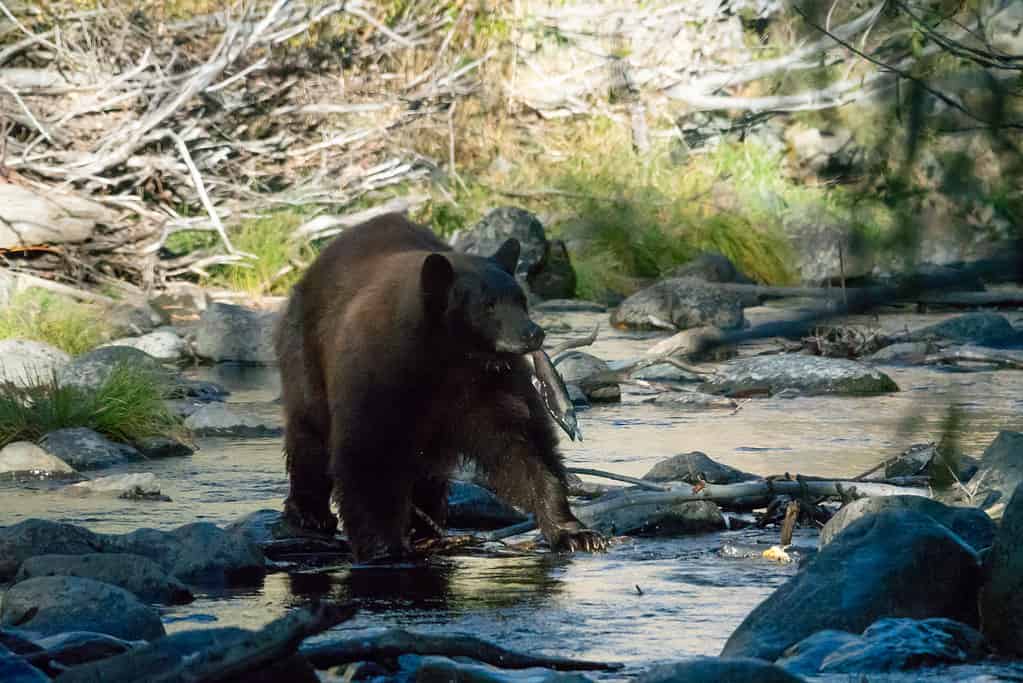For a perfectly balanced ecosystem, it is vital to respect the importance of each biotic factor within the system. There are five biotic factors in an ecosystem: producers, consumers, herbivores, carnivores, and omnivores. These are all living components, such as bacteria, plants, and animals, that interact with each other and their environment. Additionally, decomposers and parasites are sometimes considered biotic factors.
It is worth noting that the number and types of biotic factors can vary depending on the specific ecosystem. In this article, we will explore the five biotic factors and provide some examples of each.
1. Producers

Green plants are classified as producers when it comes to biotic factors.
©mokjc/Shutterstock.com
Producers are a type of biotic factor in an ecosystem. They create their own food through a process called photosynthesis. They use energy from the sun, carbon dioxide, and water to produce glucose, which is a sugar used for energy and growth. Producers are also known as autotrophs, and they form the base of the food chain in many ecosystems.
Examples:
Examples of producers include green plants, algae, and cyanobacteria, all of which are able to convert sunlight into usable energy through photosynthesis.
2. Consumers

Omnivores eat both animal and plant matter. They are considered “consumers.”
©Billion Photos/Shutterstock.com
In an ecosystem, consumers are organisms that consume other organisms for energy and nutrition. Consumers are also known as heterotrophs. As they cannot create their own food, they must rely on other living things to obtain the nutrients they need.
Consumers occupy various levels in the food chain, with apex predators at the top, and primary consumers at the bottom. The presence of consumers in an ecosystem influences the abundance and distribution of other organisms and significantly impacts the overall ecological balance.
Examples:
There are three different types of consumers: herbivores consume only plants; carnivores consume only animals; and omnivores consume both plants and animals.
3. Herbivores

Deer are considered herbivores as a biotic factor in ecosystems.
©WildMedia/Shutterstock.com
Herbivores are a type of consumer that feed on plants and other producers as their primary source of energy and nutrition. They occupy the second trophic level in the food chain. They are an important part of many ecosystems, as they control the growth and distribution of plant populations. Herbivory can also spur plants to develop defense mechanisms against herbivores, leading to the evolution of various physical and chemical strategies. These include thorns, toxins, and tough tissues.
Examples:
Some examples of herbivores include deer, rabbits, and caterpillars. However, there are many other species that rely on plants as a primary food source. The presence of herbivores can significantly impact the structure and function of ecosystems. Their interactions with other biotic and abiotic factors are important areas of ecological research.
4. Carnivores

Because bobcats hunt meat, they are carnivores in our ecosystems.
©gobirdnerds/Shutterstock.com
Carnivores are a type of biotic factor that has a significant impact on the ecosystem. Their role in the food chain is to consume other animals for sustenance. This helps regulate populations of prey species and prevent overgrazing of vegetation.
The presence or absence of carnivores can have a ripple effect throughout the ecosystem. For example, if carnivore populations decline, this can lead to an increase in populations of their prey species. This can then lead to overgrazing, which can have negative effects on the ecosystem as a whole. Alternatively, if carnivore populations increase, it can help to regulate populations of their prey and prevent overgrazing.
Examples:
Some examples of carnivores include lions, tigers, wolves, bobcats, and hyenas. These carnivores play an important role in maintaining a healthy and balanced ecosystem. They regulate populations of other animals and prevent overgrazing.
5. Omnivores

Bears are considered omnivores as a biotic factor in our ecosystems. They eat both plants and animals.
©Lisa Parsons/Shutterstock.com
Omnivores are another type of biotic factor in ecosystems. These animals consume both plants and animals as a source of food.
Omnivores play an important role by consuming a wide variety of food sources. This can help to regulate populations of both plants and animals. They can also serve as important predators and prey in the food chain.
The impact of omnivores on the ecosystem can be influenced by a number of factors. These include their feeding preferences, the availability of food sources, and their interactions with other species within the ecosystem.
Examples:
Some examples of omnivores include humans, bears, raccoons, and some species of primates. These omnivores are an important component, as they help to maintain balance and support the diverse array of life.
In Conclusion
By recognizing the importance of each biotic factor within an ecosystem, we can work towards preserving and protecting these complex systems. We can conserve habitats and protect vulnerable species, as well as reduce human impacts, such as pollution and habitat destruction. Ultimately, a balanced and healthy ecosystem is important, not only for the survival of individual species, but also for the well-being of the planet as a whole.
The photo featured at the top of this post is © sarayut_sy/Shutterstock.com
Thank you for reading! Have some feedback for us? Contact the AZ Animals editorial team.






